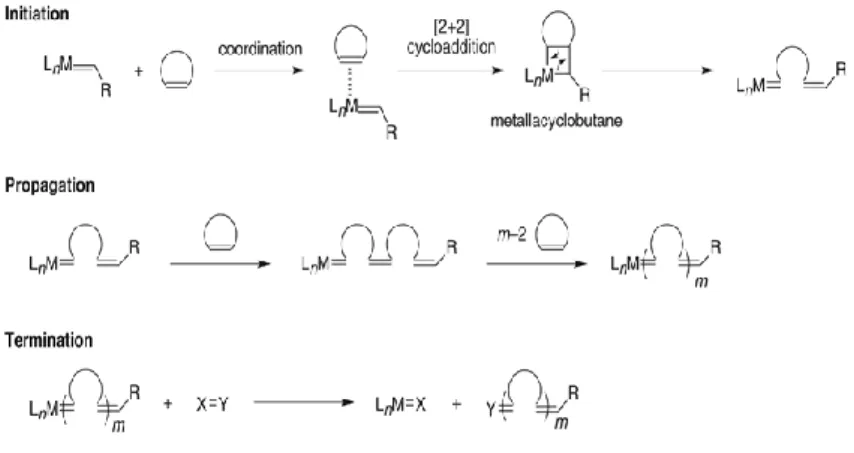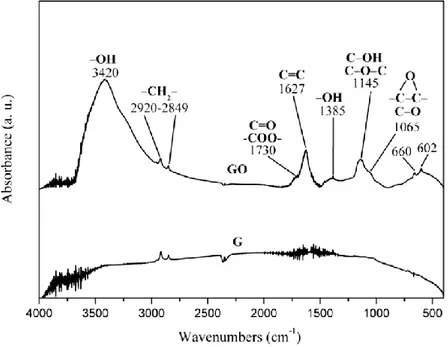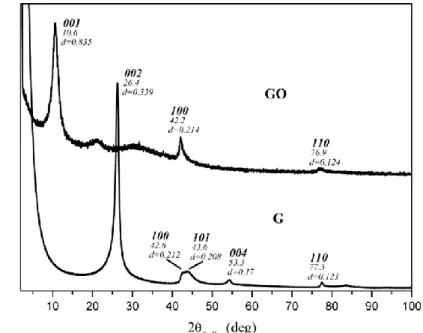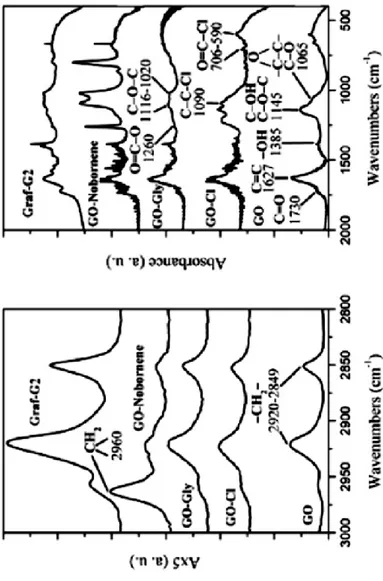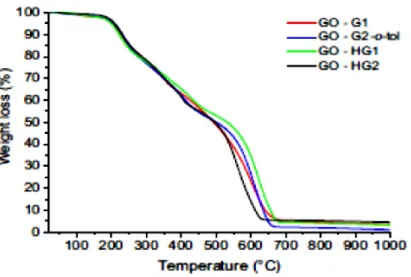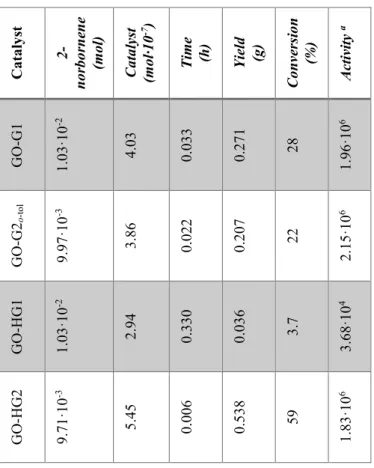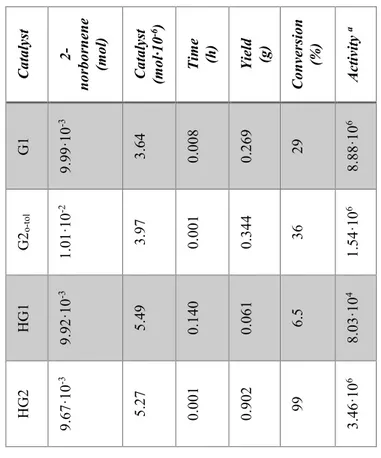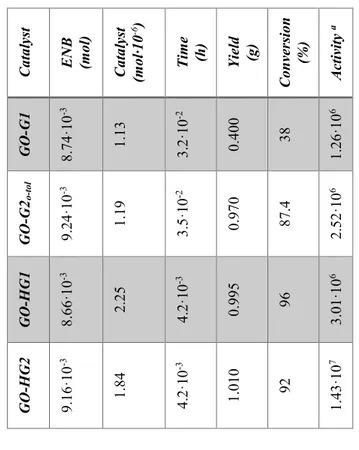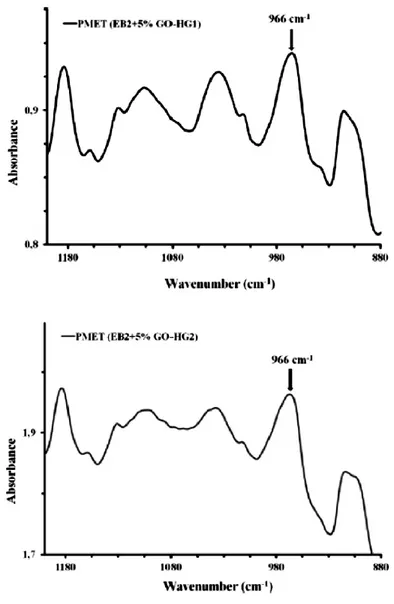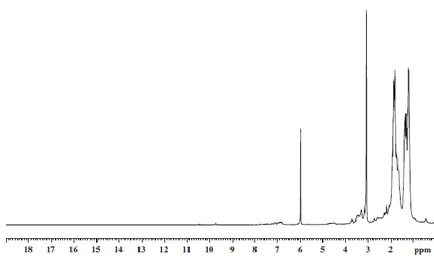Università degli Studi di Salerno
Dipartimento di Chimica e Biologia “A. Zambelli”
Corso di Dottorato di Ricerca in Chimica
Ciclo XXIX
Tesi di Dottorato in: “Metathesis reactions
catalyzed by ruthenium complexes for the
self-healing of aeronautical materials”
Tutor: Prof. Pasquale Longo
Co-tutor: Prof. Liberata Guadagno
Coordinatore: Prof. Gaetano Guerra
Candidato: Anna Agovino
Matr. 8880700208
A mia figlia Laura e a Mariano, compagno di vita
Ci sono emozioni nel tuo cuore di cui non conosci l’esistenza…
OUTLINE
This PhD thesis reports some advances in the field of aeronautical materials with self-repairing ability, in particular is investigated the design of new generation systems with healing properties.
The self-healing ability of the engineering material can prolong the life of the material itself thanks the repairing mechanisms that starts at the same moment in which the materials are damages.
In Chapter 1, the self-healing materials are described, as literature reports, focusing on their aeronautical application and several critical issue.
In Chapter 2 are described the covalent functionalization of the carbon based nanomaterials with Ruthenium based catalysts. In the first part is reported the functionalization of graphene oxide and the protection of the catalytic site by a polymeric globular shell to make the catalyst more thermally stable. In the second part is reported the covalent functionalization of multi-walled carbon nanotubes and graphite by electrochemical modification and 1,3 dipolar cycloaddition at the aim to support the metathesis catalysts and at the same time preserve the chemical and physical properties of the pristine filler.
In Chapter 3, for the same purpose, is illustrated a non-covalent functionalization of the carbon based nanomaterials to support the Ruthenium based catalysts of several carbon nanofiller.
However, the carbon nanoparticles are used in the composite materials to improve the electrical, thermal and mechanical properties but shown the great problem of the aggregation, that can
be overcome using a polymer as compatibilizer. Through this functionalization, is possible obtain many polymers capable of linked on any filler able to establish π-stacking interaction, this aspect is described in the last section of this chapter.
Chapter 4 proposed a new generation system for the self-healing ability of the composite materials, based on Cu(0) catalysts active in the polymerization of styrene at room temperature, rarely reported in literature.
At the end of each chapter is reported the Experimental Part, the Conclusion and the References.
ABSTRACT
CHAPTER 1
AERONAUTICAL MATERIALS WITH
SELF-HEALING ABILITY
1.1 SELF-HEALING MATERIALS ... 11
1.2 THE WHITE’S SYSTEM ... 14
1.2.1 THE METATHESIS ... 16
1.3 SELF-HEALING MATERIALS FOR AERONAUTICAL APPLICATIONS ... 19
1.3.1 THE MONOMER... 20
1.3.2 THE MICROCAPSULES ... 21
1.3.3 THE CATALYST... 23
1.4 INNOVATIVE SELF-HEALING SYSTEM ... 27
1.4.1 SELF-HEALING VIA RADICAL POLYMERIZATION OF STYRENE ... 34 1.4.1.1 RADICAL POLYMERIZATION ... 34 1.5 CARBON NANOFILLER ... 38 1.5.1 GRAPHENE ... 39 1.5.2 GRAPHITE ... 42 1.5.3 NANOTUBES ... 43 REFERENCES ... 45
CHAPTER 2
COVALENT FUNCTIONALIZATION OF THE
CARBON NANOFILLER
2.1 FUNCTIONALIZATION OF GRAPHENE OXIDE WITH CATALYSTS ACTIVE IN THE METATHESIS
POLYMERIZATION ... 48
2.1.1 GRAPHENE OXIDE ... 48
2.1.1.1 MORPHOLOGICAL INVESTIGATION ... 54
2.1.2 PROCEDURE ... 56
2.1.2.1 SYNTETIC STEPS OF FUNCTIONALIZATION ... 61
2.1.3 EVALUATION OF THE AMOUNT OF Ru-BASED CATALYST LINKED TO GRAPHENE OXIDE ... 64
2.1.4 EVALUATION OF CATALITIC ACTIVITY OF Ru-BASED CATALYST ... 66
2.1.5 EVALUATION OF CATALITIC ACTIVITY INSIDE THE LIQUID EPOXY MIXTURE ... 73
2.1.6 STUDY OF THE CATALYTIC ACTIVITY OF HG1 IN PRESENCE OF OXIRANE RINGS ... 77
2.1.7 MICROCAPSULES MANUFACTURE ... 82
2.1.8 EVALUATION OF THE SELF-HEALING ACTIVITY IN THE SOLID EPOXY SAMPLES ... 84
2.2 PROTECTION OF CATALITIC SITE WITH POLYMERIC GLOBULAR SHELL ... 86
2.2.1 SELECTION OF THE RATIO gHG2/ENB TO OBTAIN THE BEST DISPERSION IN THE EPOXY MATRIX ... 88
2.2.1.1 MORPHOLOGICAL CHATACTERIZATION ... 89
2.2.2 EVALUATION OF THE CATALYTIC ACTIVITY INSIDE THE LIQUID EPOXY MIXTURE ... 92
2.2.3 EVALUATION OF THE SELF-HEALING ACTIVITY
INSIDE THE SOLID EPOXY SAMPLES ... 94
2.3 ALTERNATIVE APPROACHES FOR THE COVALENT FUNCTIONALIZATION OF THE CARBON NANOFILLER ... 97
2.3.1 FUNCTIONALIZATION OF THE MULTIWALLED CARBON NANOTUBES WITH ARYLDIAZONIUM SALTS VIA ELECTROCHEMICAL MODIFICATION ... 98
2.3.1.1 FUNCTIONALIZATION OF MWCNTs WITH Ru-BASED CATALYST ... 99
2.3.1.2 EVALUATION OF CATALITIC ACTIVITY OF MWCNTs/Ru-BASED CATALYST ... 108
2.3.2 FUNCTIONALIZATION OF THE FILLER WITH 1,3-DIPOLAR CYCLOADDITION REACTION ... 109
2.3.2.1 FUNCTIONALIZATION OF THE MWCNTs ... 109
2.3.2.2 FUNCTIONALIZATION OF THE GRAPHITE ... 117
2.4 EXPERIMENTAL PART ... 120
CONCLUSION ... 139
REFERENCES ... 141
CHAPTER 3
NON COVALENT FUNCTIONALIZATION OF THE
CARBON NANOFILLER
3.1 π – STACKING INTERACTION OF THE CARBON NANOFILLER WITH PYRENE ... 1453.1.1.1 METATHESIS TEST OF PYRENE-HG2 AND
PYRENE-G1 ... 169
3.1.2 FUNCTIONALIZATION OF CARBON FILLER WITH PYRENE-CATALYST THROUGH π – STACKING INTERACTION ... 170
3.1.2.1 FUNCTIONALIZATION OF MWCNTs WITH PYRENE-Ru-BASED CATALYSTS ... 171
3.1.2.2 METATHESIS TEST OF MWCNTs-PYRENE-HG2 AND MWCNTs-PYRENE-G1 ... 177
3.1.2.3 STUDY OF THE INTERACTION BETWEEN GRAPHITE AND CATALYST USING PYRENE ... 178
3.1.2.4 FUNCTIONALIZATION OF GRAPHITE WITH PYRENE-Ru-BASED CATALYSTS ... 181
3.1.2.5 METATHESIS TEST OF GRAPHITE-PYRENE-HG2 ... 185
3.2 ADDITIONAL USED OF PYRENE-Ru-BASED CATALYSTS ... 186
3.2.1 SINTHESY OF POLYMER-PYRENE ... 187
3.3 ELECTRICAL PROPERTIES OF THE PYRENE-CARBON NANOFILLER ... 192
3.3.1 TEST OF CONDUCIBILITY IN THE NANOFILLED COMPOSITES ... 194
3.4 EXPERIMENTAL PART ... 198
CONCLUSION ... 212
REFERENCES ... 213
CHAPTER 4
RADICAL POLYMERIZATION OF STYRENE WITH
Cu-BASED CATALYST
4.1 POLYMERIZATION OF THE STYRENE AT ROOM
TEMPERATURE WITH Cu(0) CATALYST ... 214
4.2 EXPERIMENTAL PART ... 218
CONCLUSION ... 221
REFERENCES ... 222
MATERIALS AND TECNIQUES ... 223
ABSTRACT
In this work of PhD thesis, Ruthenium catalysts were covalently and non-covalently bound to carbon-based nanomaterials, in order to allow self-repairing reactions in aeronautical materials. These supported catalysts have been characterized and their activity has been evaluated in metathesis reactions.
The 1st and 2nd generation Grubbs and Hoveyda-Grubbs catalysts were covalently bonded to graphite oxide and tested in the ring-opening metathesis polymerization reaction of tensed monomers, and subsequently their catalytic activity was verified in the aeronautical composites. To optimize the performance of such supported catalysts, catalytic sites have been protected from the highly reactive environment by a polymeric globular shell.
These catalysts have been also supported on multi-walled carbon nanotubes and graphite by an alternative covalent synthetic approach that allows to preserve the chemical and physical properties of the carbon nanotubes employed, avoiding the initial oxidation step. For non-covalent functionalization, the same catalysts were first linked to pyrene molecules and then, by π-stacking, anchored on graphite. Their activity was determined in metathesis reactions and the conductivity of modified nanofiller was estimated within aeronautical composites. Such complex pyrene-catalyst, highly versatile, have been used to synthesize polymers having a terminal pyrene capable of improving the dispersion of the same carbon nanotubes used in aeronautical materials in order to improve their
performance.
Lastly, was evaluated the possibility of self-repairing the aeronautical material through radical polymerization of monomers such as styrene, using Copper catalysts.
CHAPTER 1
AERONAUTICAL MATERIALS WITH
SELF-HEALING ABILITY
1.1 Self-healing materials
The possibility of preserving the structural integrity of a material over time is a very important aspect that drives the research to focus attention in this direction. There is a possibility to associate this aspect at repair mechanisms that trigger at the same moment in which the material is damaged, rather at the characteristics of the material itself. This new idea in the '90s has stimulated the researcher in the application of self-healing materials.
In a self-healing material, following the formation of a fractures in the structure, triggered mechanisms that restore the structural integrity of the material before that the fractures can propagate and compromise its performance.
The application of these materials are very broad, ranging from building materials, to electronics, to transport. The materials that show self-healing properties are distinguished in extrinsic, whose self-healing ability is due to the addition of an external repair agent; and in intrinsic, whose repairing capacity is due to the chemical nature of the material itself. The extrinsic materials are further distinguished for the catalytic and non-catalytic repair mechanism. In both cases the repair agent is
embedded in microcapsules or in a network of capillaries or empty channels (vascular networks, that can be made up of glass fibers or carbon fiber layers.), which can be interconnected in one, two or three dimensions, depending on the complexity of the system. In all systems the repair mechanism is triggered by the breakdown of the microcapsules or the network with subsequent release of the repair agent in the affected region.
A third option is to disperse particles of the repair agent into the matrix, however in this case it is necessary to provide heat to initiate the repair process.
The research over the last decades has focused on the use of microcapsules, as the design and production of vascular networks, although offering more contact points and hence better results, is too difficult.
Microcapsules can be used, beyond the self-healing, in almost limitless applications, such as agricultural, drugs delivery, food, paints and coatings and several other industries. Recently, explosives have been encapsulated to reduce their sensitivity.
Synthesis and production of microcapsules is quite complex because they must have different requirements: the synthesis procedure should be compatible with the core material, microcapsules must have long enough shelf lives and must not allow the diffusion of healing agent out of them (shell wall should not be porous), and shell wall must be well-built and adequately hard to survive the processing circumstances of the matrix composite, as well as maintaining good adhesion with the processed resin matrix [1].
poly(urea-formaldehyde), poly(melamine-formaldehyde), poly(melamine-urea-formaldehyde), polyurethane and acrylates and are prepared by the in situ interfacial polymerization technique [2].
The self-repairing processes, proposed in the literature over the last few years, distinguish the materials with self-healing properties in two categories: non-autonomous systems, in which the repair process can be activated with external stimulation by using electric or magnetic fields, thermal treatments or chemistry; and in autonomous systems, in which the self-repair process is triggered automatically by the effect of cracking within the polymer matrix.
The application of self-healing materials is very important in the aeronautical field because the design and formulation of structural materials with self-repairing ability, is one of the most important objectives for the construction of structural aircraft parts. The use of this materials can avoid the inevitable process of deteriorating of the external structures of the planes subjected to the formation of cracks that originate to accidental events unobtainable to the naked eye caused by hail, stones on the keel during landing, accidentally contacted during maintenance and above all with flying birds. Thermo-hardening composite materials with self-healing capacity can cope these problems. Many realistic strategies have been formulated in the development of self-healing materials; a very promising system for thermosetting resin was proposed by White et al [3].
1.2 THE WHITE’S SYSTEM
The first thermosetting system with self-healing ability was proposed by White et al. which formulated and characterized a multifunctional
extrinsic autonomically healing composite.
This formulation consists of incorporating a microencapsulated healing agent and a catalytic chemical trigger within an epoxy matrix. The self-repair function is based on the metathesis polymerization of a healing agent activated by the catalyst (Fig. 1.1).
Figure 1.1: Step of the repairing mechanism that begins after a fractures.
An approaching crack ruptures embedded microcapsules releasing the curing agent into the crack plane through capillary action. Polymerization of the healing agent is triggered by contact with the embedded catalyst, bonding the crack faces. In these systems, the efficiency of self-repair function in terms of trigger, speed, and yield
is related to ring-opening metathesis polymerization (ROMP) of the healing agent by appropriate catalysts. The healing agent is a microencapsulated liquid monomer that must include a long shelf life, prompt deliverability, high reactivity, and low volume shrinkage upon polymerization [2], but also a high degree of crosslinking. The catalyst employed by White is based on Ruthenium, it is active in the metathesis reaction, the benzylidene-bis(tricyclohexylphosphine)dichlororuthenium, known as Grubbs 1st generation (G1, Fig. 1.2), and the monomer was dicyclopentadiene (DCPD, Fig. 1.3).
Figure 1.2: Grubbs catalyst first generation.
The reaction that leads at the repairing of the materials is a ring opening metathesis polymerization (ROMP, Fig. 1.4) that occur when the monomer comes out of the microcapsules and meets the catalysts.
1.2.1 THE METATHESIS
The olefins metathesis is a chemical reaction of exchange of substituents presents on two different olefins (Fig. 1.5). The reaction is catalyzed by metals such as nickel, tungsten, ruthenium and molybdenum.
Figure 1.5: Metathesis of the olefins.
Figure 1.4: ROMP reaction of DCPD catalyzed by first generation Grubb’s
There are many different types of olefin metathesis, including: - Cross metathesis (CM): involves the exchange of
substituents on two olefins.
- Ring opening metathesis (ROM): allows the opening of cyclic olefins to form an open molecule with double bonds at the ends.
- Ring-closing metathesis (RCM): two double bonds on the same linear molecule reacts to form a cyclic molecule. - Ring opening metathesis polymerization (ROMP, Fig. 1.6):
is a ROM application, which consists of simultaneous opening with subsequent polymerization of the open olefin produced, all catalyzed by the same catalyst.
Figure 1.6: Ring opening metathesis polymerization (ROMP)
The ROMP mechanism (Fig. 1.7) is based on the one proposed by Chauvin: the mechanism involves the [2+2] cycloaddition of an alkene double bond to a transition metal alkylidene to form a metallacyclobutane intermediate. The subsequent opening of the cycle produces the polymer that retains monomer unsaturation and produces a new metal alkylidene. Interaction with the d-orbitals on the metal catalyst lowers the activation energy enough that the reaction can proceed rapidly at modest temperatures.
The ROMP reaction occurs for a cyclic and tensioned olefin structures, in fact the "driving force" of the reaction is the reduction of the ring tension. The reaction between the carbene and the double bond in the cyclic structure forms a highly reactive metallacyclobutane intermediate. The opening of the ring begins to polymerize, a double bond binds to the metal and the other becomes a terminal double bond. The new carbene obtained reacts with the double bond of the next monomer, so there is the propagation of the reaction. Termination takes place when non active catalytic species are formed.
1.3
SELF-HEALING
MATERIALS
FOR
AERONAUTICAL APPLICATIONS
In the recent year, in the aeronautic field, new solutions have been proposed to improve safety and help to get, through fuel savings, environmental and economic benefits by use of lighter, stronger and more rigid polymer composites. These materials have already been applied in aircraft structures to replace the traditional metal alloys. However, in order to achieve the necessary mechanical strength for many structural applications, highly cross-linked polymeric materials are needed. Cross-linked polymers tend to be brittle and they are subject to structural weakening due to the impact damage that can lead to substantial matrix micro-cracking, delamination and fiber-matrix de-bonding, with a consequent reduction of the structural capability. Self-healing thermosetting resins are able to limit the fatigue damage and preserve their integrity, increase their lifespan, reduce maintenance costs, and ensure safety of passengers and staff [4].
White’s system can be extended for the aeronautical purposes, but it is critical that self-healing activity functions at low working temperatures which can reach values as low as -55 °C, that is the minimum temperature reached during the flying [5]. Another problem concerns the components’ stability of the composites which are compromised at the cure temperatures necessary, for good performance of the composite (> 180 °C).
The catalyst must survive in very reactive environments and at the curing temperature of the composite, whereas the monomer must
remain liquid in order to reach the catalyst at low temperature (-55 °C). Furthermore, also the microcapsules must resist under the same conditions.
These aspect was investigated by the research team of the Prof. Longo and Prof. Guadagno of the University of Salerno, in collaboration with the Alenia Aermacchi.
1.3.1 THE MONOMER
The monomer used in the White’s system, the DCPD, is not suitable for this application because, despite having a Tb of 170 °C, solidifies at temperature below the 33 °C. Several monomers have been studied, but the monomer that satisfies all the required for the aeronautical applications is the 5-ethyliden-2-norbornene (ENB, Fig. 1.8) that have a Tb of 147 and a Tf of -80 °C. Though the Tb is lower to 180°C, when the monomer was encapsulated remains liquid up to the conditions of use.
Figure 1.8: 5-ethyliden-2-norbornene.
microcapsules, has a viscosity such as to allow it to flow into the vacuum crack and it converts in a polymer that have a high degree of crosslinking without substantial volume variations. At the aim to increasing the cross-linked fraction of the polymer products have been carried out several test on the blends of monomers formed by various percentage of ENB and DCPD. The best results were obtained for the blends ENB (95%)/ DCPD (5%), because at −50 °C after 4 h don’t shows phase separation. These tests were also performed increasing the weight percentage of DCPD in the blends. The results have demonstrated phase separation after 1 h at −50 °C for ENB(85%)/DCPD(15%) and ENB(90%)/DCPD(10%) blends [6].
1.3.2 THE MICROCAPSULES
Once choice the monomer, need selected the microcapsules in order to satisfy all the necessary conditions to use. The prime function of microcapsules is to isolate the core material from surroundings to protect its functionality for a long period of time. The core material is released only when damage occurs in the matrix subsequently opening the microcapsule.
These micro-containers must be highly stable, both chemically and mechanically for use in the planes. In this respect, the shelf life of a microcapsule is as important as the capsule itself and the shorter life will reduce its efficacy in increasing the service life of materials. The stability of microcapsules depends upon a number of factors. Normally polymers and composites for aeronautical application are
processed at elevated temperature. The durability of microcapsules requires considerable advancements for applications in self-healing composites at such harsh conditions. The strength of the shell wall is one factor that decides the mechanical properties of microcapsules. However, other factors like the chemical nature of core and shell wall, core to shell ratio, pH and temperature at which the capsules are produced, viscosity of core material, and probability of dissolution of shell wall in core material are the major aspects of shelf life determination of microcapsules [1].
The microcapsules selected for the encapsulation of the monomer, as in the White’s system, are constituted by outer shell containing poly(urea-formaldehyde) and the inner shell of ethylene maleic anhydride copolymer. The capsules are prepared by in situ polymerization in an oil-in-water emulsion to modulate the dimension of the spheres and to obtain high yield.
In practice, the polymerization is carried out the in-water emulsion using a copolymer which has polar sites, compatible with an aqueous solvent, and non-polar sites, compatible with the healing agent; in this way a thin copolymer film incorporates the healing agent. Then a condensation reaction leads to the formation of a polymer that grows at the interface of the emulsion. Finally, the microcapsules are washed and dried under vacuum [7]. It is possible to select a dimensional range (from a few μm up to 250 μm), modifying the conditions of process or by using sieves [8].
Once the microcapsules containing the monomer have been synthesized, another critical point to overcome has been to verify the resistance to 180 ° C (the maximum thermal treatment to which the
epoxy resin is subjected). The thermogravimetric analysis conducted up to 1000 ° C showed their explosion at 200 °C. Between 250 and 560 °C occur fragmentation of the polymer (urea-formaldehyde) and the elimination of ammonia, amine and carbon dioxide and the last stage of degradation involves the formation of thermally polycondensated structures more stable than the original one.
1.3.3 THE CATALYST
The last point to resolve for adapt the White’s system at the aeronautical application, regards the efficiency of the catalyst at very low temperature and the thermal stability of this up to 180 °C. The complexes that catalyzed the metathesis reaction are the metal alkylidene of nickel, tungsten, ruthenium and molybdenum.
Over the years, various metal complexes have been developed to catalyze olefin metathesis reactions. In the 1980s, Schrock developed synthesis to obtain highly reactive tungsten and molybdenum complexes. These catalysts, called "Schrock catalysts", are sensitive to air and water, and their use is limited to reactions in an inert atmosphere. A few years later Grubbs created a series of catalysts, called "Grubbs catalysts", based on ruthenium (II). This complexes containing a carbenic bond are selective to carbon-carbon double bonds and they are used in metathesis reaction. They offer several advantages including high activity, stability to air and water, tolerance to polar functional groups and possible use in protic polar solvents.
The researchers of UNISA have extended the application of White’s system at Grubbs of 2nd generation catalyst ((1,3-Bis(2,4,6-
trimethylphenyl)-2-imidazolidinylidene)-dichloro-(phenylmethylene)-(tricyclohexylphosphine)ruthenium(II), G2, Fig. 1.9) and at a new typology of catalysts called Hoveyda-Grubbs of 1st (Dichloro(2-isopropoxyphenylmethylene)
(tricyclohexylphosphine)ruthenium(II) , HG1, Fig. 1.10) and 2nd generation ((1,3-Bis-(2,4,6-trimethylphenyl)-2-
imidazolidinylidene)dichloro(o-isopropoxyphenylmethylene)ruthenium(II), HG2, Fig. 1.11). These last differ to the Grubbs for the substitution of the tricyclohexyl phosphine with a isopropoxy styrene group in which the oxygen coordinates the vacant site of the ruthenium. The catalyst of 2nd generation are characterized by the presence of a N-heterocyclic carbene instead of a tricyclohexyl phosphine, to obtain a catalyst more stable and more active.
The thermal stability and the activity at low temperature in the ROMP of the ENB of these catalysts was explored, moreover was evaluated the degree of crosslinking of the polymer obtained. Thermal stability was evaluated testing the activity of the catalysts after treatment at different time and temperature, in nitrogen and air environment. Subsequently, the samples were characterized by 1 H-NMR for highlight possible changes. The results obtained showed
Figure 1.10: Hoveyda Grubbs catalyst first generation.
that the G1 was stable for 4 hours at 150 °C in nitrogen, decomposes after 2.5 hours at 150 °C in air; G2 was stable for 2 hours at 180 °C in nitrogen; the most stable ones were HG1 and HG2, in particular the 1st generation was stable 4 hours at 150 °C in nitrogen and stable 2.5 hours at 150 °C in the air; while that of the 2nd generation was stable for 2 hours at 180 °C in nitrogen.
The ROMP of the ENB at low temperature showed similar results, the Hoveyda-Grubbs catalysts gave at -50 °C a total conversion after 7 hours and 20 minutes, while G1 was active at -10 °C with a conversion of 16.8% after 60 minutes and G2 at -30 °C with a conversion of 74% after 24 hours. The exhaustive extraction in boiling cis-trans decahydronaphtalene of the polymers obtained allowed to evaluate the degree of crosslinking achieved. The best result was showed by the polymer obtained in the ROMP with the HG1 catalyst.
The test of the catalysts in the aeronautical materials is a crucial step to verify the stability of the catalysts at the thermal treatment of the epoxy mixture up to 180 °C. The results obtained were very promising for the application of this catalysts in the aeronautical materials, in particular for the Hoveyda-Grubbs catalysts. This tests showed that the G1 and G2 decompose at 150 °C, while HG1 and HG2 aren’t subject at decomposition at the maximum temperature required; this is particularly advantageous, because it gives the possibility of conducting the hardening process at higher temperatures producing a material having better chemical, physical and mechanical characteristics [8].
amount of ruthenium based catalyst used in the formulation of the composite material (weigh upon for 5% by weight), its high
market price and the need to impart additional functionalities to the epoxy matrix.
1.4 INNOVATIVE SELF-HEALING SYSTEM
In the attempt to significantly reduce the amount of metathesis catalyst and increase at the same time the properties of the epoxy matrix, we thought at several possible solutions.
At first, the ruthenium catalyst for ROMP can be supported on a substrate so to use a smaller amount of it, the interaction established between the catalyst and the filler can be covalent or non-covalent. Initially, the ruthenium catalyst was covalently bond to a carbon nanofillers (graphite, graphene and carbon nanotubes), because many recent works highlight the significant benefits due to carbon nanoparticles embedded in the polymeric matrix of structural materials, although there are problems due to its non-homogeneous dispersion.
In a precedent work the multiwalled carbon nanotubes (MWCNTs) as the support to the Grubbs 1st generation catalyst was used, in order to obtain a homogeneous polymeric materials containing carbon nanotubes able to combine the mechanical strength and electronic conductivity of carbon nanotubes with the solubility and processability of the polymer [9]. The G1 was covalently bond to the
MWCNTs according to an “grafting from” approach which allows the polymer to be directly linked to nanotubes.
Subsequently, substituting the chemical arm pentaerythritol as arm with the ethylene or propylene glycol, the amount of polymer linked to the nanofiller was increased [10]. This improvement limits the "chain leaking" phenomenon attributed to cross-metathesis reactions between the ruthenium-alkylidene of the growing chain and a double bond C = C present within the chain itself or on a neighboring chain (Fig. 1.12).
Figure 1.12: Cross leaking phenomenon.
To support the Grubbs and Hoveyda-Grubbs catalysts was adopted the same synthetic procedure reported in this works and the filler choice was the graphene oxide (GO). The choice to use the graphene
depends on its extraordinary properties. Graphene exhibit fascinating physical properties such as thermodynamic stability, extremely high charge carrier mobility and mechanical stiffness, which are critical requisites for several applications [11,12]. Moreover, graphene based materials can activate self-assembling mechanisms able to improve gas barrier and mechanical properties of nanocomposites [13,14]. Furthermore, a large increases of the glass transition temperature of the nanocomposite in presence of GO can be observed [15].
GO was prepared by chemical oxidation of graphite and ruthenium based catalysts have been covalently bonded on oxidized graphene through four synthetic steps.
To bond covalently the catalyst to GO can allow for a catalyst savings while retaining the self-healing properties of the material, moreover the can have the beneficial effects on the properties of the epoxy matrix.
Ru catalysts covalently bonded to graphene oxide were tested in reactions of ROMP of 2-norbornene, that allow to evaluate the activity of the catalysts, and 5-ethylidene-2-norbornene. Graphene based catalysts were embedded in the epoxy precursors used for structural resins and several experiments for the evaluation of their activity were performed. Tests on the evaluation of the crack-healing efficiency of the developed self-healing materials, after the curing treatment, were carried out using Dynamic Mechanical Analysis (DMA). Very promising results were obtained for HG1 and GO-HG2 catalysts, they result active in metathesis reaction at 90 °C. The amount of the ruthenium catalysts bonded to the GO used is lower than 0.5% wt of the epoxy mixture whereas, to achieve similar results
was utilizing powders of Grubbs' catalyst, a high amount (5% wt) was embedded in the epoxy formulation. This allows to considerably reduce the costs of the composite and to add the fascinating properties of GO.
As described so far, a better mechanical performance of the solidified resin is obtained by curing cycles at high temperatures, but this treatment can deactivate the ruthenium catalyst. Experiments performed in these last years to better understand the reason of the deactivation of ROMP catalysts highlighted that, when catalyst complex (Hoveyda-Grubbs'1st generation catalyst) is solubilized at molecular level, an equimolecular reaction between the epoxide ring of the matrix and the alkylidene of the ruthenium complex occurs determining its deactivation. In particular, the results demonstrated lower healing efficiency with respect to the more expensive self-healing system based on catalyst embedded in the form of solid particles in the microencapsulated epoxy resins. Experimental analysis has shown that solid catalyst particles in the epoxy mixtures, also at high temperature, retain an intact heart of active catalyst particles being the latter not to direct contact with the oxirane rings of the epoxy matrix. Instead, in the case of the catalyst particles solubilized at molecular level, the catalyst complex which is in contact with the oxirane rings is deactivated during the curing reactions, hence reducing the actual amount of catalyst active in the ROMP reactions [16]. Thus, in order to obtain high healing effectiveness a large amount of very expensive catalyst, introducing it as solid particles in the resin, is required.
The promising results obtained with GO-HG1 and GO-HG2 have suggested that it may be useful to protect the Ru-catalytic sites on graphene sheets, isolating them from the surrounding environment. This can be achieved forming a globular shell around the active catalytic site, obtainable by a short polymer chain.
Few units of 2-norbornene were polymerized around the GO-HG2, forming a globular shell that partially englobing the catalytic sites, to obtain the protected HG2-catalyst on graphene sheets.
The GO-HG2 protected with polymeric globular shell were tested after curing cycles up to 140 °C. The protection of the catalytic sites proved to be very effective in preventing catalyst deactivation during the curing cycle, even using a very low concentration of Ru-based catalyst (lower than 0.5% by weight).
Carbon based nano-materials (graphene or nanotubes), as already said, exhibit interesting structural, mechanical, electrical, and electromechanical properties, that are enhanced by the fact that all the atoms of the material are placed on the surface. It should be noted, however that the functionalization of this materials with the ROMP catalysts request a first step of oxidation and this involves in a modify of the graphitic planes; consequently, the sp2 structure, responsible of remarkable electrical conductivity of this carbon materials, is partially destroyed. Instead, if the aromatic network remains intact, carbon nanoparticles can be used as filler and dispersed in the engineering materials to improve electrical conductivity, a fundamental requirement for several applications.
Therefore, the covalent modifications produce hybridized sp3 carbon, resulting in loss of electrical conductivity of the nanofillers, so it
would be important to functionalize the carbon nano-filler in noncovalent ways to preserve the sp2 structure and thus their electronic characteristics.
For these purposes, we explored the functionalization of the MWCNTs via electrochemical modification and functionalization of the MWCNTs and graphite via 1,3-dipolar cycloaddition reaction, that produce formation of covalent bonds. The catalysts supported through this alternative covalent functionalization of the carbon nanofiller shown an activity lower than the activity of the catalysts supported on the GO, probably for the nearness of the catalyst at the filler.
Thus, at the purpose of didn’t modify the graphitic plane, a non-destructive modification of the carbon filler structure that always allowing to support the ROMP catalysts and at the same time leave intact the conductivity of the filler was studied. To realize this system we used a molecule that interacted whit the aromatic ring of the graphitic sheet without establishing a covalent bond. This was achieved through π-stacking interaction between, aromatic rings of the filler and of a suitable ligand.
The pyrenyl group (Fig. 1.13), which has a highly aromatic nature, is known to interact strongly with the basal plane of
graphite and
sidewalls of nanotubes via π-stacking
[17,18].
To bond the Ruthenium catalyst on the carbon nanoparticles, the pyrene butyric acid was functionalized, in a similar manner as previously reported for the GO. The final reaction gives the catalyst linked to the pyrene and this system can interact not only on the graphite, graphene or nanotubes, but also on any filler able to give the π – stacking interaction [19]. This is an important goal in the field of the self-healing materials because it allows to functionalize the filler without alter the characteristics of the nanofiller itself, and furthermore, one times synthetized the catalytic complex pyrene-catalyst, this is available to link it on any filler, saving considerable time of reaction and costs.
In addition, the pyrene-catalyst can be used to synthesize, through ROMP, a wide range of polymers with a terminal pyrene, allowing them to bind to many substrates thus favoring a homogeneous dispersion of the filler in the materials.
1.4.1
SELF-HEALING
VIA
RADICAL
POLYMERIZATION OF STYRENE
The critical issue of the high costs of Ruthenium catalysts moves the research towards alternative solutions to have materials with self repairing ability through the use of less expensive systems. What described up to now concerns the repair of materials via metathesis reactions promoted by Ruthenium complexes. It was thought to the possibility of a different healing mechanism which excludes the use of such expensive complex. The new idea is to replace the expensive Ru catalyst with a Cu(0) based catalyst, and thus also utilize a different mechanism of healing respect to considered until now. The new proposal mechanism of healing is a radical polymerization of the mixture styrene-divinylbenzene, with the catalytic system formed by Cu(0)- N,N,N’,N’’,N’’-pentamethyl-diethylentriamine (PMDETA) and methyl-2-bromopropionate as initiator. The Cu(0) is much cheaper than Ru catalyst.
1.4.1.1 RADICAL POLYMERIZATION
The polymerizations depending on the mechanism involved are distinct in addition and step polymerization. The step polymerization is often a condensation polymerization because involved with expulsion of a low molecular weight molecule, called "condensate". The features of the step polymerization are that the start and
propagation reactions occur with approximately the same speed, you do not need to activate the system with an initiator, the macromolecule is formed in a relatively long time and the degree of polymerization increases over time and the conversion to polymer remains constant. The monomers that give this type of polymerization are characterized by two or more functional groups. The chain polymerization, instead, is carried out for successive additions, therefore it is said addition polymerization. In this kind of reactions each step depends on the previous one and allows the next and don’t form byproduct; they involved vinyl monomers, or monomers in which is present a double bond C = C.
The different types of chain polymerization depending on the active species:
radical polymerization ionic polymerization
- cationic polymerization - anionic polymerization
In radical polymerization reactive molecules are the radicals, while in ionic polymerization the reactive molecules are carbocations or carbanions for respectively cationic and anionic polymerization. They differ in the mode of bond cleavage.
The radical polymerization is carried out in three steps: 1. activation
2. propagation 3. termination
The activation process is obtained starting from a free radical initiator. The initiator is a molecule able to decompose by homolytic
breakage of a link, with the corresponding formation of the radical, according to a reaction of the type:
I2 → 2I •
Where with I2 indicates the initiator and I • indicates the radical. The radical (I •) presents a remarkable reactivity, for which it can join a monomer (M) leading to the formation of a primary radical (• P1):
• I + M → P1 •
The activation of a molecule can take place via thermal, chemically or electromagnetic radiation. The generation reaction of the radicals is a slow reaction, because it leads to the formation of an unstable compound. The initialization is affected by temperature and is slow enough to ensure that in general the speed of the entire process of polymerization is controlled by the only chemical activation reaction: in fact, other reactions are relatively fast and are not influenced by temperature.
In the process of propagation, the primary radical (• P1) reacts with more monomers subsequently, forming a radical compound having a number of repeating units higher.
• P1 + nM → Pn•
where "n" is the number of monomers that are added to the chain and (Pn•) represents a chain composed of a number "n" of repeating units. The attack can occur in different types:
- tail-head attack - head-tail attack - tail-to-tail attack.
the propagation takes place through the head-tail attack.
The termination process take place when a polymer chain (Pn•) meets another polymer chain which is also in the propagation phase (Pm•). The reaction between these two radicals leads to the formation of a polymer (P) with a number of repeating units equal to the sum (m + n) of the repeating units that made up the single chains.
• Pn + Pm• → P
The previous reaction corresponds to a termination reaction for coupling. There is also the possibility that two chains react in a termination reaction by disproportionation, giving rise to the formation of chains having a terminal unsaturation:
R-CH2-CH2 • + R'-CH2-CH2 • → R-CH2-CH3 + R'-CH = CH2 The initiators of these reactions can be divided according to their greater solubility in water or in organic solvents.
The initiators soluble in organic solvents: the most used are benzoyl peroxide (BPO), the azodiisobutyronitrile (AIBN) and hydroperoxides.
The initiators soluble in water: are the Fenton reagent, which exploits the redox reaction between the persulfate and bisulfite (or metabisulphite) catalyzed by Fe3+ ions.
Other types of initiators are those activated by heat or by electromagnetic radiation.
1.5 CARBON NANOFILLER
Materials with layers of sp2-bonded carbon atoms exhibit a large variety of structures characterized by different degree of structural order and morphologies. These materials, principally, differ for their degree of order perpendicular to the graphitic layers, out-of-plane order, and in the graphitic layers, in-plane order (Fig. 1.14). The most disordered graphitic structures are coals, cokes and carbon blacks.
Figure 1.14: All graphitic allotropes.
The carbon nanofillers used in the epoxy matrix both to support the Ruthenium catalyst for self-healing and to improve the properties are graphene, graphite and nanotubes.
1.5.1 GRAPHENE
Recently, applied research interest has been focused on the production of graphene, the basic building block for all graphitic materials. Graphene is a two-dimensional sheet of sp2-hybridized carbon. Its extended honeycomb network makes it the basic of other important allotropes; it can be stacked to form 3D graphite, generally consisting of more than ten graphene layers; rolled to form 1D nanotubes, further categorized into single- or multi- walled depending on the number of graphene layers present (SWCNT/MWCNT respectively); and wrapped to form 0D fullerenes, a spherical buckyballs (Fig. 1.15). Consequently, graphene can be considered the “mother of all carbon forms”.
Figure 1.15: Schematic representation of graphene, which is the fundamental
starting material for a variety of fullerene materials; buckyballs, carbon nanotubes, and graphite.
Long-range π-conjugation in graphene yields extraordinary thermal, mechanical, and electrical properties. While studies of graphite have included those utilizing fewer and fewer layers for some time, the field was delivered a jolt in 2004, when Geim and co-workers at Manchester University first isolated single-layer samples from graphite [20]. Until 2004, 2D crystals like graphene were considered to be thermodynamically unstable and hence theoretically impossible to exist in the free state and were passed off as mere “academic” materials. However, the discovery of free-standing graphene in 2004 changed the scenario and spurred the interests of material scientists and condensed matter physicists. For their discovery, Geim and Novoselov received the 2010 Nobel prize in physics. The routes available for the preparation of graphene are the chemical vapor deposition (CVD) of monolayer of graphite on transition metal surfaces; the micromechanical exfoliation of graphite that involves peeling of the graphene from graphite using “Scotch” tape; the epitaxial growth of graphene on sonication in aqueous media, GO exfoliates readily into colloidal suspensions of single graphene oxide layers and thermal reducing of GO [21].
Pristine graphene is a hydrophobic material, and has no appreciable solubility in most solvents. Nevertheless, the processing of graphene composites concerns itself foremost with the solubilization of graphene. To improve the solubility of graphene, different functional groups have been attached to the carbon backbone by chemical modification, both covalent or noncovalent.
Graphene combines the peculiarity of being an extremely lightweight material with exceptional mechanical strength properties, for this
reason the applications are really varied.
A successfully investigated of the graphene is the preparation of polymeric nanocomposites for which remarkable improvements of various properties such as electrical conductivity, thermal stability, elastic modulus or traction resistance are observed following insertion into the polymer matrix of graphene or other graphene-based nanostructures [22].
The use of graphene in electronics is very promising due to the high mobility of chargers and low noise, properties that are well exploited in the manufacture of high performance field transistors and battery applications [22], supercondensers, cells fuel, photovoltaic devices, photocatalysts and more [23]. Moreover, the extraordinary thermal, chemical and mechanical stability combined with transparency and monoatomic thickness make graphene a new generation of transparent electrode materials. As describe above, the recent application of this materials are to support the metathesis catalysts in self-healing materials.
1.5.2 GRAPHITES
Graphite (Fig. 1.16) is a crystalline
, polymorphic form of
elementary carbon with ordered layers.
It is the 3D carbon allotrope and is made of graphene sheets piled on top of each other with …ABABAB… stacking and separated by 0.335 nm. Each carbon atom in the graphite crystal is hybridized trigonally, forming three σ and one π bonds. The hybridized orbitals of the sp2 type give σ bonds of a length of 1.42 Å, arranged at 120° angles with respect to one another, with sheets made up of regular hexagons. The fourth electron of each atom, being in the p orbital, forms π bonds with all the neighboring atoms. The structure of graphite consists of six-membered rings in which each carbon atom has three near neighbors at the apices of an equilateral triangle. Within the large
planar layers, there are linkages intermediate between atomic and metallic bonds. The layers in the crystal are held together by van der Waals bonding forces. Weak bonding perpendicular to the layers gives rise to easy gliding parallel to the sheets [24].
1.5.3 NANOTUBES
The carbon nanotubes are obtained rolled the graphene sheet to form one dimensional carbon material. The discovery of carbon nanotubes (CNTs) in 1991 opened up a new era in materials science by Lijima [25]. These incredible structures have an array of fascinating electronic, magnetic and mechanical properties. CNTs are at least 100 times stronger than steel, but only one-sixth as heavy, so nanotube fibers could strengthen almost any material [26]. Nanotubes can conduct heat and electricity far better than copper. CNTs are already being used in polymers to control or enhance conductivity and mechanical properties. Carbon nanotubes are composed of carbon atoms linked in hexagonal shapes, with each carbon atom covalently bonded to three other carbon atoms. Carbon nanotubes have diameters as small as 1 nm and lengths up to several centimeters. Although, like buckyballs, carbon nanotubes are strong, they are not brittle. They can be bent, and when released, they will spring back to their original shape. Carbon nanotubes can occur as multiple concentric cylinders of carbon atoms, called multi-walled carbon nanotubes (MWCNTs) and as one cylinder which are called single-walled carbon nanotubes (SWCNTs) (Fig. 1.17). Both
MWCNTs and SWCNTs are used to strengthen composite materials [27, 28].
Figure 1.17: Structure of Single Walled Carbon Nanotubes (SWCNTs) and
REFERENCES
[1] H. Ullah, K. A. M. Azizli Z. B. Man, M. B. Che Ismail, and M. Irfan Khan; POLYMER REVIEWS, 2016, VOL. 0, NO.
0, 1-57.
[2] S. Billiet, X. K. D. Hillewaere, R. F. A. Teixeira, F. E. Du Prez; Macromolecular Rapid Communication 2013, 34, 290−309, chemistry of crosslinking processes for self-healing materials; [3] S. R. White, N. R. Sottos, P. H. Geubelle, J. S. Moore, M. R. Kessler, S. R. Sriram, E. N. Brown, S. Viswanathan; Nature, 2001, 409, 794;
[4] B. J. Blaiszik, S. L. B. Kramer, S. C. Olugebefola, J. S. Moore, N. R. Sottos NR, S. R. White. Selfhealing polymers and composites. Annu Rev Mater Res 2010; 40, 179-211.
[5] Guadagno L., Mariconda A., Longo P. et al. U.S. Pat. Appl. Publ. 2011, US 20110118385 A1 del 19/05/2011.
“Process for preparing self-healing composite material of high efficiency for structural applications.”;
Guadagno L., Longo P., Mariconda A., et al. US 2010168280 A1 del 01/07/2010.
“Process for preparing self-healing composite material.”;
Guadagno L., Longo P., Mariconda A., et al. WO 2009/113025 A1 International Application No.: PCT/IB2009/051005 del 17/09/2009. “A composite material which is self-reparing even at low temperature”;
[6] M. Raimondo, P. Longo, A. Mariconda and L. Guadagno. Advanced Composite Materials, 2014, 1-11.
[7] S. R. White, N. R. Sottos, P. H. Geubelle, J. S. Moore, M. R. Kessler, S. R. Sriram, E. N. Brown, S. Viswanathan, Autonomic healing of polymer composites. Nature 2001; 409:794-7; E. N. Brown, M. R. Kessler, N. R. Sottos, S. R. White; Journal of Microencapsulation, 2003, 20 N0 6, 719-730;
[8] L. Guadagno, P. Longo, M. Raimondo, A. Mariconda et al.; US 6518330 del 13/3/2008
“Materiale composito autoriparantesi anche a bassa temperatura”; [9] Y. Liu, A. Adronov; Macromolecules; 2004, 37, 4755-4760; [10] C. Costabile, F. Grisi, G. Siniscalchi, P. Longo, M. Sarno, D. Sannino, C. Leone, P. Ciambelli; Journal of Nanoscience and nanotechnology, 2011, 11, 1.
[11] A. K. Geim, K. S. Novoselov. Nat Mater, 2007; 6, 183-191. [12] T. J. Echtermeyer, M. C. Lemme, M. Baus, B. N. Szafranek, A. K. Geim, H. Kurz; Electron Devices Lett, 2008, 29, 952-954. [13] N. Yan, G. Buonocore, M. Lavorgna, S. Kaciulis, S. K. Balijepalli, Y. Zhan, et al.; Compos Sci Technol, 2014, 102,74-81. [14] G. Scherillo, M. Lavorgna, G. G. Buonocore, Y. H. Zhan, H. S. Xia, G. Mensitieri, et al.; ACS Appl Mater Interfaces, 2014, 6, 2230-2234.
[15] M. Mauro, M. R. Acocella, C. E. Corcione, A. Maffezzoli, G. Guerra; Polymer, 2014, 55, 5612- 5615.
[16] M. Raimondo, P. Longo, A. Mariconda, L. Guadagno; Adv Compos Mater, 2015, 24(6), 519-529.
[17] Katz, E. J. Electroanal. Chem. 1994, 365, 157.
[18] H. Jaegfeldt, T. Kuwana, G. J. Johansson; J. Am. Chem. Soc.,
[19] F. J. Gómez, R. J. Chen, D. Wang, R. M. Waymouth, H. Dai; The Royal Society of Chemistry, 2003, 190-191.
[20] M. J. Allen, V. C. Tung, R. B. Kaner; Chemical Reviews,
2009.
[21] R. Sengupta, M. Bhattacharya, S. Bandyopadhyay, Anil K. Bhowmick; Progress in Polymer Science, 2011, 36, 638–670. [22] G. Di Francia, E. Massera, M. Miglietta, I. Nasti, T. Polichetti; Energia Ambiente e Innovazione, 2011, 3, 59-67.
[23] X. Huang, X. Qi, F. Boeyab, H. Zhang; Chem Soc Rev, 2011, 1-21;
[24] S. Park and R. S. Ruoff; Nat. Nanotechnol., 2009, 5, 217– 224.
[25] S. Lijima. Nature 1991, 354, 56 – 58.
[26] M. Treacy, T. W. Ebbesen, J. M. Gibson. Nature, 1996, 381, 678–680.
[27] E. Flahaut, R. Bacsa, A. Peigney, C. Laurent. ChemComm,
2003, 12 1442–1443.
CHAPTER 2
COVALENT FUNCTIONALIZATION OF
THE CARBON NANOFILLER
2.1 FUNCTIONALIZATION OF GRAPHENE
OXIDE WITH CATALYSTS ACTIVE IN THE
METATHESIS POLYMERIZATION
2.1.1 GRAPHENE OXIDE (GO)
Graphene oxide (GO, Fig. 2.1) is a layered material, which can be obtained by chemical oxidation of graphite. Graphene oxide can be prepared by reaction of graphite with strong mineral acids and oxidizing agents, typically via treatment with a mixture of sulfuric and nitric acid, using potassium chlorate, as in the Staudenmaier’s [1] methods, or with a mixture of sodium nitrate and concentrated sulfuric acid, using potassium permanganate, as in the Hummers’ method [2].
The precise structure of GO remains a matter of debate [3] and, according to model of Lerf et al. [4], the GO obtained consists of oxidized sheets having oxygen containing functional groups, that confer polar surface properties and a strong hydrophilic character. At the surface of the basal planes there are hydroxyl and epoxide groups
and at the edges there are carbonyl and carboxyl groups.
Figure 2.5: Schematic picture of GO.
The acidity of the GO was determined performing a typical acid-base titration. Amount of carboxyl and total acidic site on the GO were quantitatively chemical analyzed by titration. The acid group was basified with a strong base NaOH, and then the NaOH in excess was titrated with the strong acid HCl. The equivalent volume that allows to determine the title was obtained from the point of inflection. The title obtained for difference was 14.1 mmol/g.
𝐺𝑂 − 𝑂𝐻 + 𝑁𝑎𝑂𝐻 → 𝐺𝑂 − 𝑂−𝑁𝑎++ 𝐻2𝑂 + 𝑁𝑎𝑂𝐻𝑒𝑥𝑐
𝑁𝑎𝑂𝐻𝑒𝑥𝑐 + 𝐻𝐶𝑙 → 𝑁𝑎𝐶𝑙 + 𝐻2𝑂
FT/IR spectra in Fig. 2.2 show the presence of oxygenated functional groups on the layers of GO, whose concentration is negligible in the
starting graphite sample (G). Absorption bands of carboxyl groups (1730 cm-1), hydroxyl groups (stretching at 3420 cm-1 and bending at 1385 cm-1) and epoxide groups (1145-1065 cm-1) are observed [5].
Figure 2.6: FT/IR spectra in the range 4000-400 cm-1 of the starting high surface
area.
The GO thermogram (Fig. 2.3) shows a loss of about 10 % between 20 °C and 150 °C due to the evaporation of the interlaced water. In the range of 150 °C to 350 °C there is a loss of 28 % due to the degradation of the carboxy functions and between 350 °C and 650 °C instead regards the rest of the structure corresponding to 62 % of weight loss.
Figure 2.7: Thermogram of GO in air.
The oxidation of G produces an oxidized layered material with increased interlayer distance. This distance can be evaluated by X-ray diffraction pattern. X-X-ray diffraction patterns of the starting graphite (G) and of the derived GO are shown in Fig. 2.4.
Figure 2.8: X-ray diffraction patterns (Cu Kα) of the starting high surface area
graphite (G) and of graphene oxide (GO).
The pattern of GO reveals a broad 001 reflection, corresponding to an interlayer distance of 0.84 nm. The pattern of G shows an intense 002 reflection, corresponding to an interlayer distance of 0.339 nm. Hence, the value of interlayer distance of GO is higher than the interlayer distance observed in the starting graphite, as represented in Scheme 1.
Scheme 2.1: Schematic representation of the increasing of the interlayer distance
All the observed reflections are indicated in Table 2.1 in which the observed XRD peak d-spacings are compared to the expected hexagonal graphite [6].
Table 2.1: Observed XRD reflection d-spacings of sample G and comparison to
the expected hexagonal graphite.
Experimental
d-spacings (nm) (hkl) Theory Difference
0.339 (002) 0.338 0.01
0.212 (100) 0.214 -0.02
0.208 (101) 0.204 0.04
0.170 (004) 0.168 0.02
0.123 (110) 0.123 0
Data shown in Table 2.1 indicate that the starting graphite is the most common form of graphite in nature. In fact, the values in the column of the “difference” indicate that it is hexagonal graphite with ABAB stacking of layers. The correlation length (D002) of sample G was determined using Scherrer's equation:
𝐷 = 𝐾 𝛽 cos 𝜃
where K is the Scherrer constant, assumed = 1, is the wavelength of the incident X-rays, is the diffraction angle and is the corrected integral breadth. The value obtained for D002 was 10 nm. From
Scherrer's equation, the number of layers can be obtained using the below equation [7].
Number of layers = 𝐷002 𝑑002
Considering the value of 0.339 nm for the d-spacing of the reflection (002), a number of about 30 layers was calculated. As shown in Fig. 2.4, while the WAXD pattern of G shows the intense 002 reflection, corresponding to an interlayer distance of 0.339 nm; this reflection disappears in the diffraction spectrum of GO which shows the most intense reflection at 2 = 10.6°. This last reflection corresponds to a value of the inter-layer spacing of 0.835 nm. A typical broad reflection near 10.21° of 2 was observed for GO powder prepared by other research groups [8, 9].
2.1.1.1 MORPHOLOGICAL INVESTIGATION
FESEM images of the starting graphite G and the derived graphene oxide GO are shown in Fig. 2.5.
FESEM images reveals that the GO material consists of randomly aggregated, thin, crumpled sheets, closely associated with each other. Many block sheets show a number of layers consistent with the observed diffractogram for which a number of layers less than 10 was calculated.
2.1.2 PROCEDURE
Carboxylic groups on GO sheets were used in the first step of the functionalization. The concentration of carboxylic groups on GO sheets was determined by titration [10].
A second titration was conducted at the aim of evaluate the only carboxylic acid groups using a weak base NaHCO3. In this case, the excess of HCl was titrated in a second acid-base titration with NaOH. The value of the title was found to be 5.5 mmol/g.
𝐺𝑂 − 𝐶𝑂𝑂𝐻 + 𝐻𝐶𝑂3𝑁𝑎 → 𝐺𝑂 − 𝐶𝑂𝑂−𝑁𝑎+ + 𝐻
2𝑂 + 𝐶𝑂2+ 𝑁𝑎𝐻𝐶𝑂3 𝑒𝑥𝑐 𝑁𝑎𝐻𝐶𝑂3 𝑒𝑥𝑐+ 𝐻𝐶𝑙 → (𝐻2𝑂 + 𝐶𝑂2) + 𝑁𝑎𝐶𝑙 + 𝐻𝐶𝑙𝑒𝑥𝑐
𝐻𝐶𝑙𝑒𝑥𝑐+ 𝑁𝑎𝑂𝐻 → 𝑁𝑎𝐶𝑙 + 𝐻2𝑂
The functionalization of GO with ROMP catalysts was carried out through a series of four reaction steps (see Scheme 2.2). This procedure was a slightly modification of one recently reported for the functionalization of multi-walled carbon nanotubes [11].
Scheme 2.2: Functionalization of GO with Ru-based catalysts.
Carboxylic groups on GO sheets were first reacted with thionyl chloride, resulting in the corresponding acyl chloride (GO-Cl), step 1, esterified with ethylene glycol (GO-Gly), step 2 and then reacted with 5-acid chloride 2-norbornene (GO-Nor), step 3. The metathesis reaction between GO-Nor and catalyst produced Grubbs or Hoveyda-Grubbs catalyst-functionalized graphene oxide layers step 4.
Figure 2.9: Grubbs and Hoveyda-Grubbs of I and II generation.
The intermediate products of each step have been characterized by X-ray diffraction and FT/IR analysis. Fig. 2.7 and Fig. 2.8 shows respectively the X-ray diffraction patterns (CuKα) and the FT/IR spectra of GO, of the intermediate products for each functionalization step GO-Cl (1), GO-Gly (2) and GO-Norbornene (3) and of the covalent functionalized graphene oxide layers with G2 (4).
Figure 2.7: X-ray diffraction patterns (Cu Kα) of: L-GO, the intermediate
products of each functionalization step (GO-Cl, GO-Gly and GO-Nor) and the covalent functionalized graphene.
Figure 2.8: FT/IR spectra of: GO, the intermediate products of each
functionalization step (GO-Cl, GO-Gly and GO-Norbornene) and the covalent functionalized graphene oxide layers.
2.1.2.1
SYNTETIC
STEPS
OF
FUNCTIONALIZATION
- First step: formation of graphene acyl chloride
Figure 2.9: Chlorination of GO.
The first step of functionalization of GO consist in the formation of product (1), the corresponding chloride of the starting GO in which the carboxylic groups was converted in the corresponding acyl chloride. The treatment of GO with thionyl chloride causes the complete exfoliation of GO particles, in fact the pattern of GO-Cl in Fig. 2.7 shows a very broad halo, centered at d = 0.37 nm with a correlation length of about 1 nm. In the FT/IR spectrum (Fig. 2.8) it was observed the absorption peaks at 1090 cm-1 and 790 cm-1 (C-Cl stretching) and the carbonyl peak at 1720 cm-1 confirm the formation of -COCl groups on graphene oxide layers.
- Second step: esterification reaction
Figure 2.10: Esterification of GO-Cl.
The reaction of GO-Cl (product 1) with ethylene glycol leads to the formation of an ester, which furthermore generates an ordered intercalate crystalline phase with periodicity d = 0.76 nm and a correlation length of about 16 nm (Fig. 2.7). The FT/IR spectrum of Fig. 2.8 shows the shift of the position of the absorption band of the carbonyl groups at 1743 cm-1 and the absorption peaks at 1260 cm-1 (related to the groups O=C-O) and 1116 cm-1 and 1020 cm-1 (C-O-C stretching).
- Third step: functionalization of GO with 5-acid
chloride 2-norbornene
Figure 2.11: Esterification of GO-Gly with norbornene.
Also this reaction is an esterification, the product (3) leads another bond C-O-C by reaction with 5-acid chloride 2-norbornene. The
FT/IR spectrum (Fig. 2.8) shows the same profile of product (3) confirming the esterification reactions. These further treatments of GO-Gly disturb the out-of-plane order of the intercalate crystalline phase (D┴ = 8 nm in GO-G2), while maintaining about the same periodicity (as see in the Fig. 2.7).
- Fourth step: functionalization of GO with Ru-based
catalysts
Figure 2.12: Metathesis reaction with Ru-based catalyst.
The last step consists in the metathesis reaction of the product (3) with the ROMP catalysts. For examples are show only the characterization of the GO-Norbornene with G2-o-tolyl catalysts. From the Fig. 7 can be deduced that the product (4) are consistent with an intercalated structure with ethylene glycol, covalently functionalized at the edges and on the surfaces of the crystalline domains with G2-o-tolyl. In the FT/IR spectrum of Fig. 2.8 are present similar absorption peaks of the product (3).
2.1.3 EVALUATION OF THE AMOUNT OF
Ru-BASED CATALYSTS LINKED TO GRAPHENE
OXIDE
The amount of Ru linked to graphene was evaluated by thermogravimetric analysis (TGA). The analyses were conducted in air flow up to 1000 °C to allow the Ru to oxidize in the form of ruthenium oxide (RuO2). Ruthenium (IV) oxide is a purple crystalline solid at room temperature. It can be prepared by direct synthesis at 1000 °C from the elements, or by pyrolysis of halides of ruthenium. From the residue was possible to calculate the moles of RuO2 and therefore the amount of bonded catalysts.
Figure 2.13: Thermogram in air at 1000 °C of the Ru-based catalysts covalently
